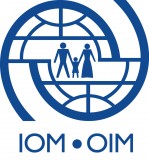Research, exhibition document gold blood
For centuries now, it’s been one
of the world’s pathetic problems, and it continues to remain so without any end
in sight to it.
It (the plight of artisanal gold
miners) also affects so many other world issues, migration included, that the International
Organization for Migration (IOM) Regional Office for West and Central Africa has
unveiled an exhibition, Pour Tout l’Or du Monde (For All the Gold in the World),
which documents the plight.
The exhibition, which showcases
the harsh living and working conditions for gold miners along the so-called
gold belt in Senegal, Mali, Guinea and Burkina Faso coincides with the
unveiling of IOM’s research on migration dynamics and profiles around artisanal
gold mining sites in the region.
Pour Tout l’Or du Monde includes
testimonials and photographs collected by IOM that draw attention to the
vulnerability and protection needs of all those impacted by gold mining
including female sex workers and unaccompanied minors working at the
sites.
Earlier this year, a young man
named Famoro Sidibé died after the pit he was digging in collapsed on top of
him. His death was as painful as it was inevitable, his friends say.
“It doesn’t surprise us when we
see what state the pits are in,” says Idrissa Traoré, a pit leading hand, as he
watches young men dig without helmets or regular access to water. “We’re scared
of dying here.”
Using Kintsukuroi, the
traditional Japanese art of mending broken pottery using resin laced with gold
or silver, as the guideline for the exhibition, attendees will be able to see
the strength, resilience and incredible courage of all those who are broken and
destroyed by this dangerous activity.
Experts attending the event will
present the key findings of the research conducted by IOM this year in the four
target countries and will discuss the main recommendations to improve the
living conditions in the sites including developing accessible health
facilities, including drinking water supply and the establishment of a toxic
waste treatment system; support the government in developing awareness
programmes on minors’ school drop-out and dangers of artisanal gold mining
among minors and their families; and raise awareness among migrant gold miners
on the dangers associated with gold mining and the need to use protective
equipment.
Two panels will also discuss
other research topics including the feminization of migration in Côte d’Ivoire
and the re-opening of the Western Mediterranean route from Senegal.
The United States Department of
State’s Bureau of Population, Refugees and Migration (PRM) funded the research
in Guinea and Senegal as part of the Africa Regional Migration Programme and
the United Kingdom’s Department for International Development (DFID) funded
research in Mali and Burkina Faso as part of the Safety, Support and Solutions
across the Central Mediterranean Route programme.




Comments
Post a Comment